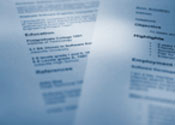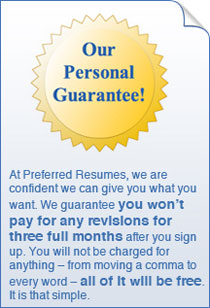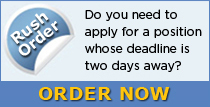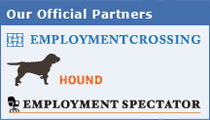Graphic Design Professionals: Despite the Emphasis on Your Portfolio, Don't Forget to Polish Your Resume
By Emily Sanderson
|
|
 | |
| The advent of the Internet has provided many graphic design professionals with new career opportunities, which is helpful in a field that many art majors transfer to in order to make a better living than they would creating art for art’s sake. |
Once design students and professionals have the design portfolios they seek, polished resumes and cover letters will take them the rest of the way to landing the jobs of their dreams.
The advent of the Internet has provided many graphic design professionals with new career opportunities, which is helpful in a field that many art majors transfer to in order to make a better living than they would creating art for art’s sake. The field of design must follow the same cutthroat market parameters as advertising and fashion, which experience constant change and are subject to consumer preferences.
Finding a niche in the graphic design market may only last for a season, so designers must keep on top of industry trends and then develop their personal signatures to remain competitive. A resume for a design professional should be equally intriguing and yet stay within the limits of a traditional curriculum vitae.
Consider your resume a canvas, carefully maintaining a balance on the page with the appropriate use of white space. Draw emphasis to those areas on your resume that you want prospective employers to see first, such as your name, by giving them more weight. Also, make the document user-friendly. Be aware of areas that employers will look for, such as dates you worked for previous employers. However, reduce the emphasis of dates if you have gaps in employment.
 | |
| Consider your resume a canvas, carefully maintaining a balance on the page with the appropriate use of white space. |
Use strong, active verbs to describe your experience. Use present or past tense, and avoid participle structures or conditional structures. Avoid the use of ''helped'' or ''assisted'' unless you were an intern or in an entry-level position where you can claim no individual authorship. Some synonyms for ''design'' include the following:
- Sketch
- Draft
- Develop
- Craft
- Fabricate
- Construct
- Conceive
- Create
- Shape
- Draw
- Mold
- Carve
- Outline
Your cover letter should match your resume in terms of design -- particularly the way you format your name and contact information. The letter should cater to the potential employer, not only in purpose but in the way you present your qualifications and credentials. The letter should not be about what they can do for you but what you can do for them.
The first paragraph should primarily introduce your purpose in writing, which is to express interest in a position with the company. Take the time to research the company, and tell them in an informed way that you are impressed with the company’s track record and that your skills and experience will complement their projects. Be humble yet confident and savvy. The research you do for the cover letter and resume will help you down the road, as well, in the job interview.
Use the middle paragraph to highlight your qualifications and achievements. Be careful not to spout off too much of what they will find on your enclosed resume. Stay brief, keeping to one page. Remember that potential employers most likely have stacks of resumes and cover letters to get through.
In the final paragraph propose an action to take place: scheduling an interview where you can further discuss your qualifications as they apply to their business needs. Finally, thank them in advance for their consideration.
For more information about how ResumeApple can help you prepare a winning resume and cover letter, go to www.resumeapple.com.




